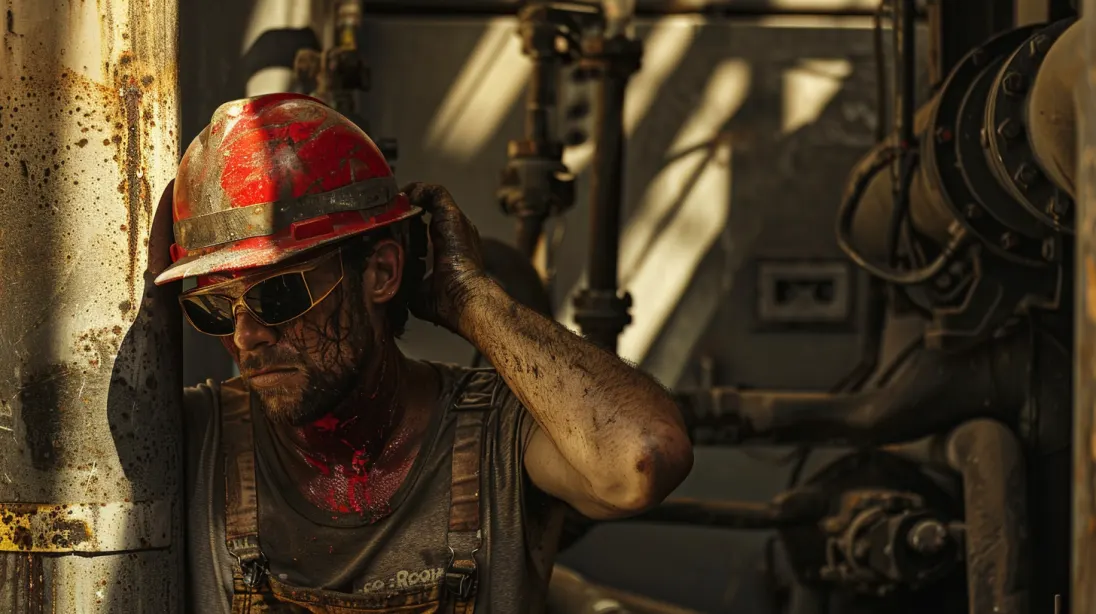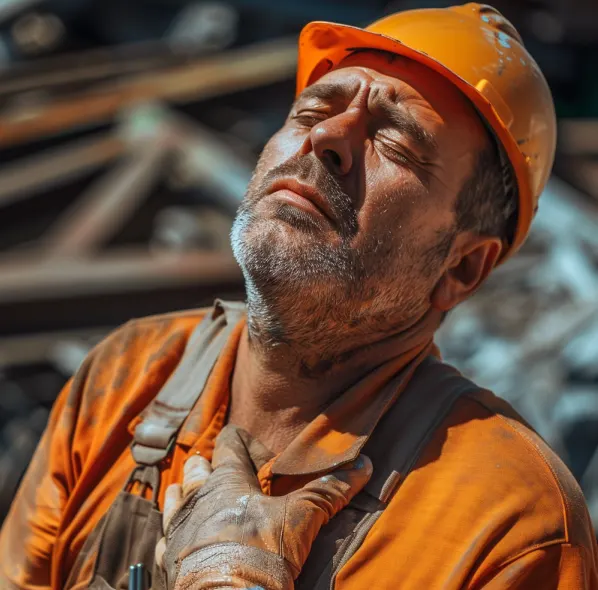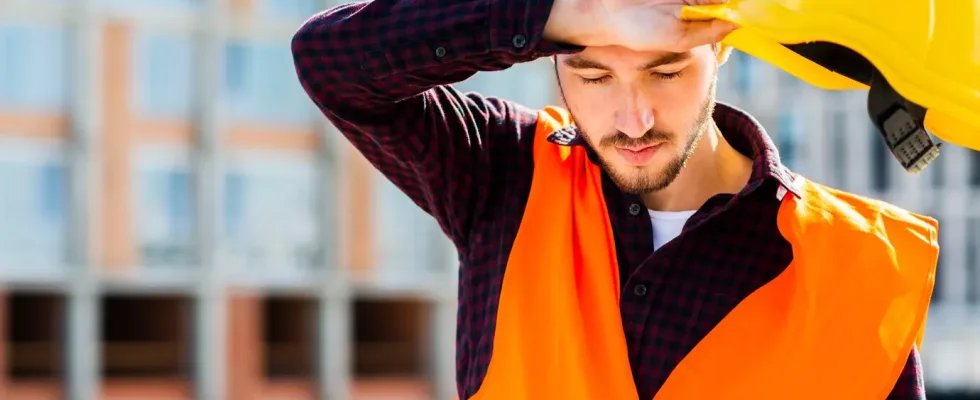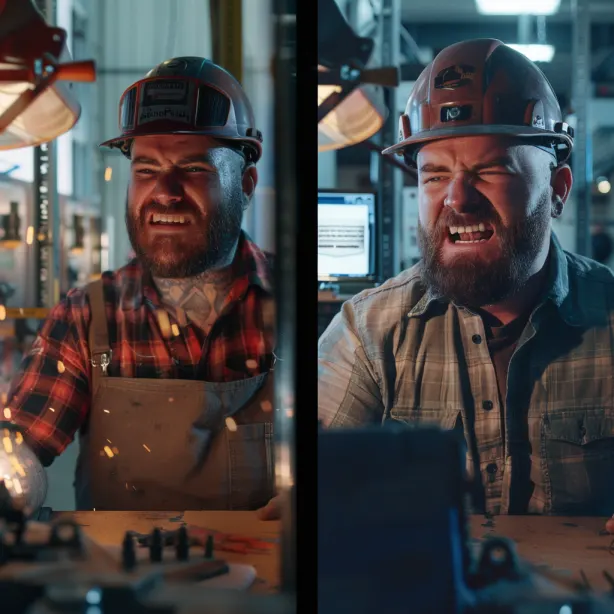As a construction worker, I know all too well the feeling of the sun beating down on your back and the relentless heat that can turn a hard day’s work into a battle for survival. Heat illness is a serious threat on construction sites, and with rising temperatures year after year, it’s becoming more crucial than ever to implement advanced strategies for prevention.
In this blog, we’ll delve deeper than just “drink plenty of water” and explore some cutting-edge techniques to keep you cool, safe, and productive throughout the summer months.

Going Beyond Just Water: Advanced Hydration Techniques
We all know staying hydrated is essential, but on a scorching construction site, plain water might not be enough. Let’s explore some advanced hydration techniques:
-
Electrolyte Power: Sweat doesn’t just contain water, it also contains electrolytes – essential minerals that help your body function properly. During intense heat and physical exertion, you lose electrolytes faster, leading to fatigue, muscle cramps, and even heart problems. Consider incorporating electrolyte replacement drinks alongside water. However, remember, these drinks aren’t a magic bullet. Choose sugar-free options and tailor your intake based on activity level and weather conditions.
-
Hydration Monitoring with Wearables: Technology can be your friend! Wearable hydration trackers can monitor your sweat loss and provide real-time insights into your hydration needs. These gadgets can be a great motivator, reminding you to take a sip before dehydration sets in.
-
Overcoming Dehydration Aversion: Sometimes, forcing down water when you’re not thirsty can be unpleasant. Here are some tips: Flavor your water with slices of fruit or sugar-free water enhancers. Keep your water bottle chilled – a refreshing sip is far more enticing than a lukewarm one. Experiment with different temperatures – some people find ice-cold water uncomfortable, while others prefer it.
Building Resilience: Acclimatisation for Heat Tolerance
Our bodies can adapt to hot environments – that’s what acclimatization is all about. Here’s how to leverage this natural process:
-
The Science Behind Acclimatisation: When exposed to heat regularly, our bodies become more efficient at sweating, allowing us to cool down more effectively. This reduces the risk of heat stress, a condition where your body struggles to regulate its temperature.
-
Safe and Effective Heat Acclimatisation Programs: Don’t just throw new workers into the hottest part of the day. Develop a structured program that gradually increases heat exposure over time. Start with shorter duration in moderate heat and progressively increase both duration and intensity. Monitor workers for signs of heat stress and adjust the program as needed.
-
Tracking Progress and Adjusting Workloads: During acclimatisation, workers might experience fatigue or lower productivity. This is normal! Monitor worker progress, adjust workloads accordingly, and prioritise rest breaks in cool areas.
Keeping Cool Beyond Shade: Advanced Cooling Strategies
Shade is essential, but on a scorching day, you might need more. Let’s explore some advanced cooling strategies:
-
Targeted Cooling with Vests and Wraps: Cooling vests, neck wraps, and bandanas can be game-changers. These garments use various technologies, like phase-change materials or water evaporation, to lower your core body temperature directly.
-
Portable AC and Misting Stations: For particularly hot environments, consider utilising portable air-conditioned units or misting stations to create cool zones on the job site. These temporary cooling solutions can provide much-needed relief during breaks or while working in non-shaded areas.
-
Clothing Choices for Breathability and Heat Reflection: What you wear matters! Opt for loose-fitting, lightweight clothing made from breathable fabrics like cotton or linen. Light-coloured clothing reflects sunlight, while dark colours absorb it. A wide-brimmed hat protects your head and face from the sun’s direct rays.

Planning for Heat Safety: Work Scheduling and Planning
Sometimes, a little planning goes a long way in preventing heat illness. Here are some scheduling and planning strategies to consider:
-
Work When it’s Cooler: Whenever possible, schedule physically demanding tasks for the cooler morning or evening hours. Avoid peak heat times in the afternoon when the sun is at its strongest.
-
Mandatory Rest Breaks in Cool Areas: Enforce regular breaks in cool, shaded areas. This allows your body to recover and rehydrate, preventing heat stress from building up.
-
Planning Workloads Based on Heat Index: The heat index combines temperature and humidity to reflect how hot it actually feels. Consider adjusting workloads based on the heat index – lighter tasks during high heat index periods and more strenuous activities during cooler times.
Recognising and Responding to Heat Illness
Early recognition of heat illness is critical for preventing serious health complications. Here’s what you need to know:
-
Warning Signs and Symptoms:
- Heat Stress: This is the body’s early warning sign. Be aware of excessive sweating, headache, dizziness, nausea, and muscle cramps.
- Heat Exhaustion: If you experience heavy sweating, fatigue, weakness, rapid heart rate, and cold, clammy skin, you might be suffering from heat exhaustion.
- Heatstroke: This is a medical emergency. Look out for confusion, slurred speech, seizures, a high body temperature (above 40°C or 104°F), and a lack of sweating.
-
Emergency Procedures: If you suspect someone is experiencing heatstroke, call emergency services immediately. While waiting for help, move the person to a cool, shaded area. Loosen their clothing and cool their body down with wet cloths or fans. Do not give them anything to drink unless they are conscious and alert.
-
Heat Illness Prevention Training: Every construction worker should be trained on recognising and responding to heat illness. This training should also emphasise the importance of looking out for fellow workers and reporting any signs of heat stress.
Building a Culture of Heat Safety Awareness
Here at Daily Health Links, we believe in creating a safer working environment for everyone, especially those in high-risk industries. That’s why we partnered with Fredo’s Super Store, a leading supplier of welding equipment and safety gloves, welding boots and overall safety protection gear, to raise awareness about heat-related illness among construction and metal workers.
Heat illness prevention requires a collective effort. Here’s how to cultivate a culture of heat safety awareness on your construction site:
-
Leadership Commitment: Management needs to demonstrate a strong commitment to heat safety. This can involve providing proper hydration stations, cooling equipment, and encouraging workers to take breaks.
-
Open Communication: Encourage open communication about heat stress. Workers should feel comfortable expressing concerns about the heat or requesting breaks without fear of repercussions.
-
Buddy System: Implement a buddy system where workers look out for each other’s well-being. This can help identify early signs of heat stress before it escalates into a serious health problem.
The Future of Heat Illness Prevention
The fight against heat illness is constantly evolving. Here’s a glimpse into potential future advancements:
-
Smart Clothing Technology: Imagine clothing that actively monitors your body temperature and adjusts cooling mechanisms like ventilation or integrated cooling packs.
-
Advanced Wearable Sensors: Wearable technology with real-time sweat analysis could provide even more personalised hydration recommendations.
-
Heat-Acclimatization Supplements: Research is ongoing into potential supplements that could accelerate the body’s natural acclimatization process.
By implementing advanced strategies for hydration, acclimatization, cooling, and work planning, construction workers can significantly reduce their risk of heat illness and work safely and productively even in the hottest summer months. Remember, staying cool isn’t just about comfort – it’s about your health and safety. So, take control, stay hydrated, and beat the heat!

